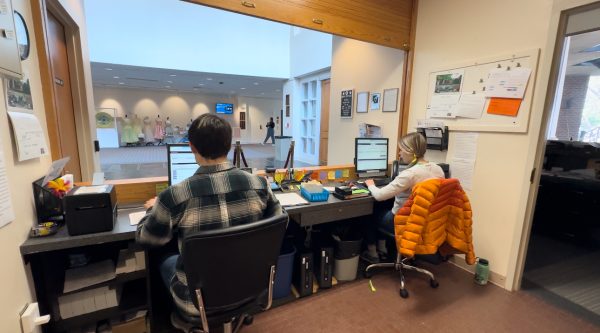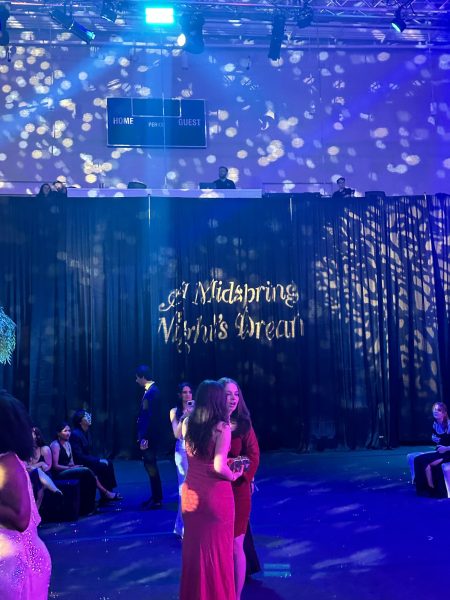“Distorted Myths” exhibit inspired by childhood memories of working with upholstery
Esteban Ramón Pérez’s exhibit presented in Staniar Gallery from Oct. 10 until Nov. 2
Esteban Ramón Pérez’s “DNA (Bad Blood)” was on display in Staniar Gallery. Photo from Collection Pérez Art Museum Miami
November 8, 2022
Esteban Ramón Pérez’s leather-and-embroidery-based exhibit, “Distorted Myths” was displayed in the Staniar Gallery at Lenfest Center for the Arts last month.
Born in Los Angeles, Pérez, 33, is a first generation Mexican American.
Pérez’s father immigrated from Mexico and began an upholstery business in California, where Pérez learned to work with various textiles.
“I grew up in that upholstery shop,” Pérez said in a gallery talk at Washington and Lee on Oct. 25. “My main responsibility was tearing down furniture, building it back up and also finishing, which I think made me very detail-oriented.”
Pérez graduated from Yale School of Art with a Master of Fine Arts in painting and printmaking in 2019.
Although his training at Yale began with a focus on painting, Pérez wanted to expand into different materials, such as leather.
His inspiration for using leather came from his father’s upholstery shop and the material’s versatility.
“I ended up focusing on leather scraps because I realized that there was more that I could do with that material,” Pérez said. “I realized that I could paint on it; I could scar on it; I’m still trying to learn what else I could do with it.”
Pérez sees his work in the context of rasquache, which means “leftover” or “of no value” in Spanish.
The rasquachismo aesthetic, introduced by Chicano scholar Tomás Ybarra-Frausto, makes use of what has been passed down or already exists in a form of upcycling. It is a technique commonly seen in Chicano and Mexican art made by working class communities.
Much of Pérez’s work has a sociopolitical message and is rooted in history. For example, one of the works in this exhibition, “DNA (Bad Blood),” was inspired by a worldwide championship boxing match from 2002 that divided Pérez’s community.
“Both [fighters] were Mexican American Chicanos,” he said. “This was a fight that split the community, identifying with either fighter, and I remember that variation in identification.”
When Pérez watched a recording of the fight in 2019 to create his piece, he felt a similar tension in his own opinions.
“I re-watched the fight while I was in my studio, and I found myself identifying with both fighters,” he said. “This piece is symbolic to an internal conflict I was having in myself.”
In a deviation from his preferred neutral color scheme, Pérez used red leather scraps to create the piece. He also included a pair of boxing gloves and scarred a portrait of a boxer into the leather.
The exhibit in Staniar was curated by Associate Curator at the Whitney Museum of American Art in New York Marcela Guerrero. Guerrero is known for her work with Latin American art and has collaborated with Pérez in the past.
Staniar’s next exhibit, “Terra Ignota: Land Unknown,” will be on display from Nov. 7 through Dec. 9.













